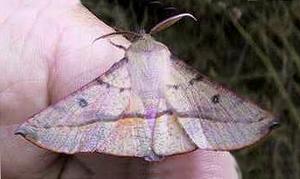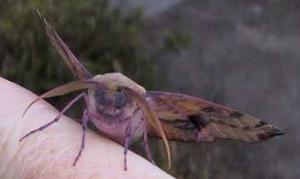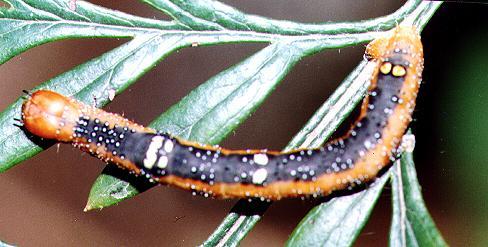
brown and black form
(Photo: courtesy of
Bruce Anstee, Riverstone, New South Wales)
These Caterpillars are brown with a broad black band
along the back, or green.

green form
(Photo: courtesy of David Douglass-Martin,
Encounter Bay, South Australia)
Both forms have a scattering of white dots, and
have pairs of pale spots on
abdominal segments one, three, and eight.
Small horns project from these.
The Caterpillars have only two pairs of
ventral
prolegs.
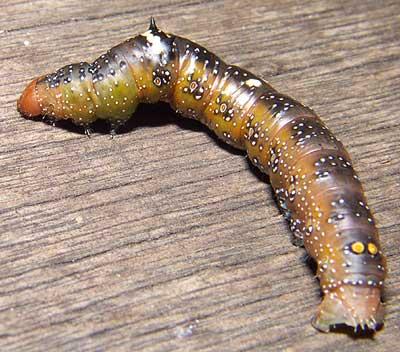
(Photo: courtesy of David Nelson, Sydney, New South Wales)
When disturbed, the caterpillar curls the head under
the body exposing the horns and markings on the thorax
and the start of the abdomen.
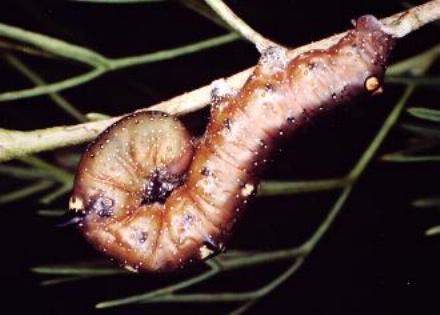
(Photo: courtesy of Merlin Crossley,
Melbourne, Victoria)
The caterpillars feed on various members of the plant family
PROTEACEAE
including :
Spider Flowers ( Grevillea ),
Needlewood ( Hakea ), and
Candle Flowers ( Banksia ).
The caterpillars grow to a length of about 4 cms.
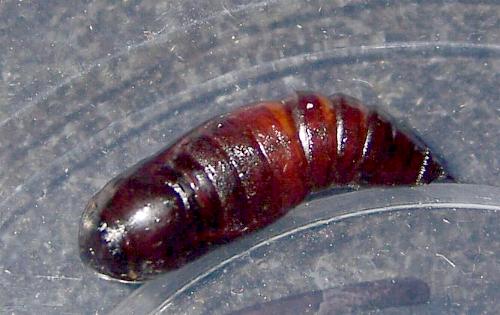
(Photo: courtesy of Susan Foyle, Sydney)
The pupa is brown, and formed in a loose white cocoon
on the foodplant.
The pupal stage can be as short as 3 weeks in summer.

(Photos: courtesy of
Evan Harris,
Ipswich, Queensland,)
The general wing colour of the adult moths varies:
at one extreme some are pink and at the other some are brown.
The body also varies from pink to brown.
The moths all have a brown or yellow line across the upper
surface of each wing.
Also each forewing has a recurved wingtip, and
a small transparent spot surrounded by an irregular dark mark
on both the upper and under surfaces.
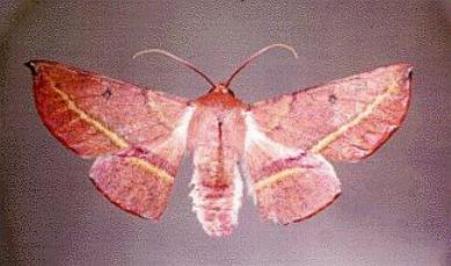
(Specimen: courtesy of the
Macleay Collection, Chau Chak Wing Museum, University of Sydney)
In its resting pose, the lines are aligned and
resemble the vein in a leaf.
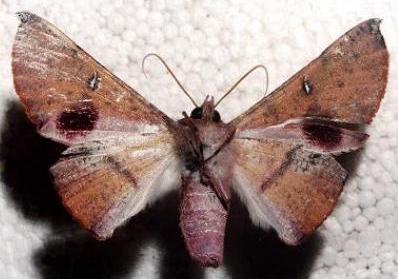
underside
(Specimen: courtesy of the
Macleay Collection, Chau Chak Wing Museum, University of Sydney)
Underneath, there is also a large dark purple blotch under each forewing,
and a dark line under each hindwing.
The moths have a wingspan of 5 to 7 cms.
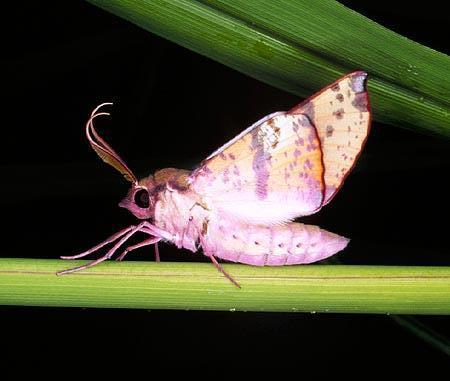
(Photo: courtesy of
Carol Buchanan,
Bayldon, New South Wales)
A female moth will lay over 100 eggs,
which are pale green and oval.
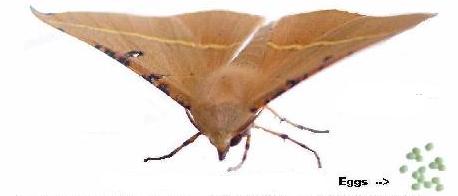
(Photo: courtesy of John Stumm)
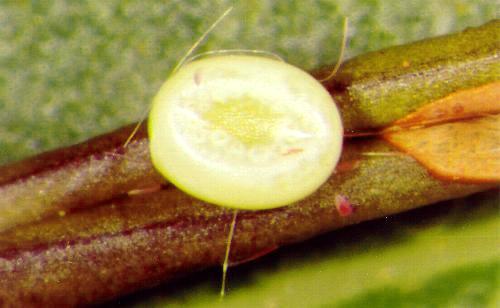
egg, magnified
(Photo: courtesy of Cathy Byrne)
The species is found over most of Australia, including
Queensland,
New South Wales,
Australian Capital Territory,
Victoria,
Tasmania,
South Australia, and
Western Australia.
The species has recently been the subject of DNA analysis,
and is now thought to be two species.
One is still called Oencochroma vinaria.
The other has been named
Oenochroma barcodificata Hausmann, 2009.
The two species look superficially similar.
(Photos: courtesy of John Thompson, Melbourne, Victoria)
Further reading :
David Carter,
Butterflies and Moths,
Collins Eyewitness Handbooks, Sydney 1992, p. 193.
Ian F.B. Common,
Moths of Australia,
Melbourne University Press, 1990, pl. 10.12, p. 368.
Pat and Mike Coupar,
Flying Colours,
New South Wales University Press, Sydney 1992, p. 48.
Achille Guenée,
in Boisduval & Guenée: Uranides et Phalénites,
Histoire naturelle des insectes; spécies général des lépidoptères,
Volume 9 (1857), p. 185, No. 287, and also
Plate 7, Fig. 2.
Peter B. McQuillan, Jan A. Forrest, David Keane, & Roger Grund,
Caterpillars, moths, and their plants of Southern Australia,
Butterfly Conservation South Australia Inc., Adelaide (2019), pp. 134-135.
Peter Marriott,
Moths of Victoria: Part 4,
Emeralds and Allies - GEOMETROIDEA (B),
Entomological Society of Victoria, 2013, pp. 10-11.
Paul Zborowski and Ted Edwards,
A Guide to Australian Moths,
CSIRO Publishing, 2007, p. 143.
(updated 17 June 2013, 6 May 2025)












